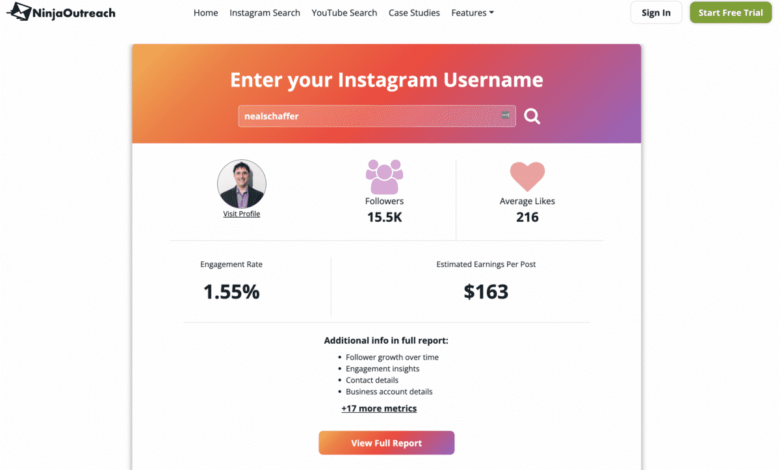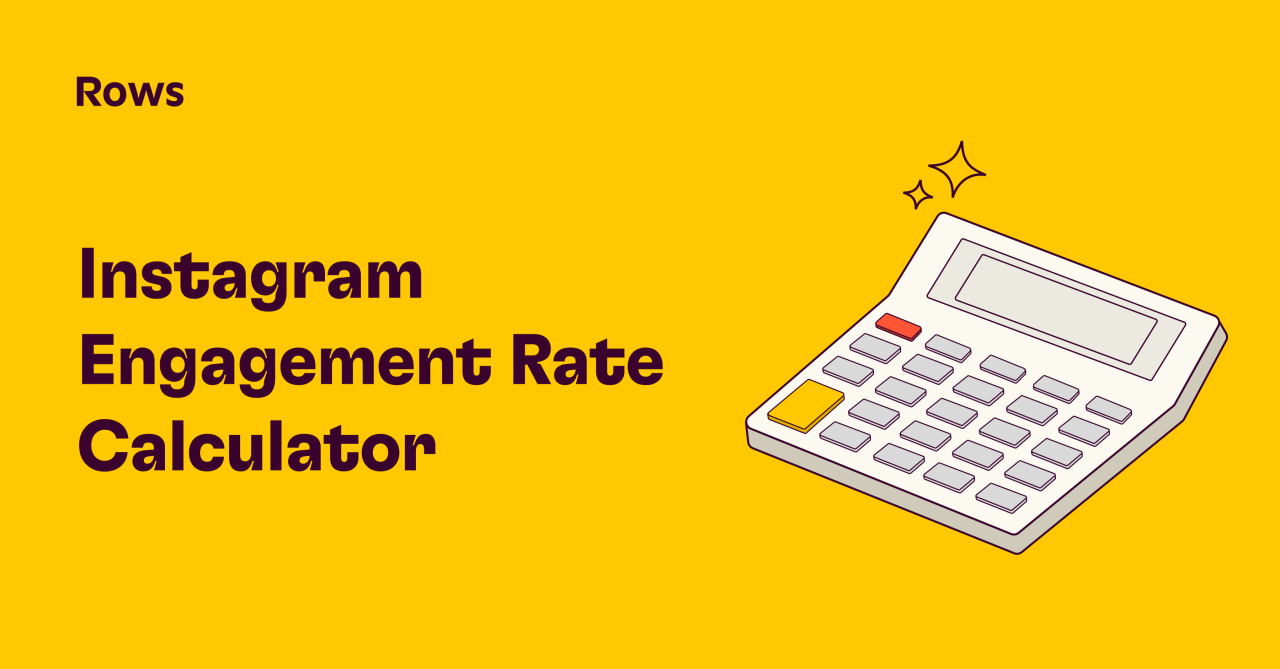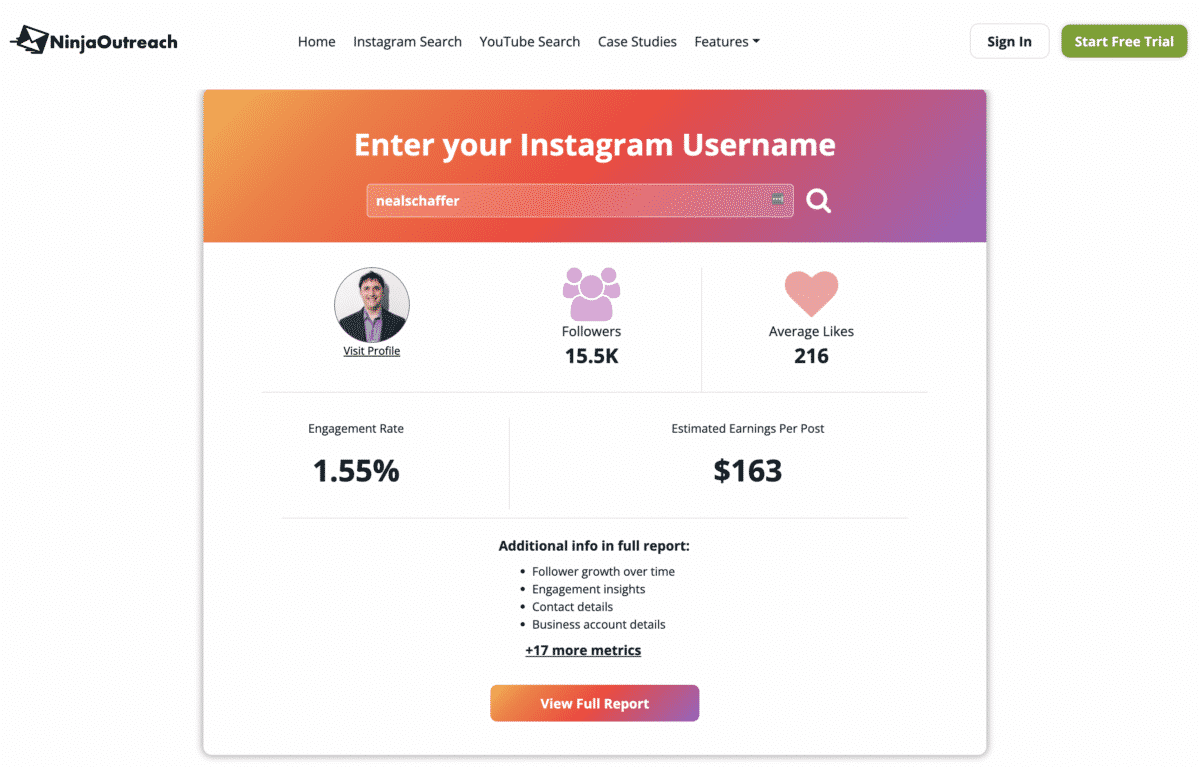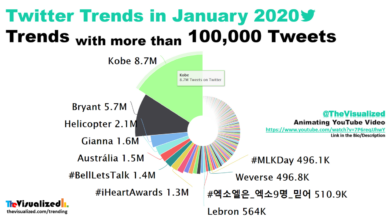
How to Calculate Your Instagram Engagement Rate
How to calculate your engagement rate on Instagram is crucial for understanding your audience’s response to your content. This guide dives deep into defining engagement, exploring different metrics, and analyzing trends to optimize your Instagram strategy. We’ll uncover the secrets behind boosting your engagement, from understanding the nuances of likes and comments to mastering the art of interpreting data for maximum impact.
We’ll explore everything from the fundamental definition of engagement rate to the practical steps of calculating it, including different metrics like likes, comments, shares, and saves. We’ll also discuss how to analyze your engagement rate trends over time, identifying patterns that can point towards opportunities or problems. Finally, we’ll equip you with strategies to use this data for optimization, ensuring your content resonates with your audience.
Defining Instagram Engagement Rate: How To Calculate Your Engagement Rate On Instagram
Instagram engagement rate is a crucial metric for understanding how well your content resonates with your audience. It measures the level of interaction your posts receive, reflecting how effectively your content captures attention and sparks meaningful connections. A high engagement rate signifies a strong audience connection, suggesting that your content is valuable, interesting, and relevant to your followers.
This, in turn, often correlates with increased brand awareness, improved customer loyalty, and greater potential for growth.Understanding engagement rate is key to optimizing your Instagram strategy. By analyzing your engagement metrics, you can identify what content formats and topics resonate most with your audience. This data-driven approach enables you to tailor your content calendar to better engage your followers, leading to higher levels of interaction and overall account growth.
Key Metrics for Calculating Engagement Rate
Engagement rate on Instagram encompasses various interactions. Crucially, it’s not just about likes, but also comments, shares, saves, and direct messages. These metrics collectively reveal the level of audience interest and interaction with your content. A holistic approach to engagement rate calculation considers the interplay of these different interaction types.
- Likes: The number of users who liked your post.
- Comments: The number of comments left on your post.
- Shares: The number of times your post was shared to other platforms.
- Saves: The number of times users saved your post for later.
- Direct Messages: The number of direct messages received in response to your post.
Engagement Rate vs. Reach
Engagement rate and reach are distinct metrics, though both are important indicators of social media performance. Reach represents the total number of unique users who saw your post, whereas engagement rate measures the interaction those users had with your post. A high reach might suggest broad visibility, but a low engagement rate could indicate that your content isn’t captivating enough to encourage significant interaction.
Understanding the difference between reach and engagement is crucial for optimizing your content strategy.
Engagement Rate Variation Across Audience Segments, How to calculate your engagement rate on instagram
Engagement rates can vary significantly based on different audience demographics, interests, and engagement patterns. For example, a post about a specific niche product or interest might have higher engagement rates among users actively involved in that community. This is often due to a shared interest or a stronger connection with the content. A targeted approach to content creation, tailoring to specific audience segments, can lead to better engagement rates.
A Simple Formula for Calculating Engagement Rate
A simple formula for calculating engagement rate is crucial for evaluating content performance and making informed decisions about future strategies. This formula allows for quick calculations and a better understanding of your audience’s engagement.
Engagement Rate = (Total Engagement / Total Reach) – 100%
Where:* Total Engagement = Sum of likes, comments, shares, saves, and direct messages.
Total Reach = The number of unique accounts that saw your post.
This formula provides a standardized method for measuring engagement, allowing you to compare performance across different posts and campaigns.
Figuring out your Instagram engagement rate is pretty straightforward – it’s all about those likes, comments, and shares. But did you know that Facebook contests and giveaways, like those detailed in this excellent article on facebook contests and giveaways boost engagement , can significantly boost engagement overall? Ultimately, knowing how to calculate your Instagram engagement rate helps you understand what’s working and what needs tweaking in your strategy.
Calculating Engagement Metrics

Understanding your Instagram engagement rate is crucial for gauging audience interest and tailoring content strategies effectively. A high engagement rate often signifies a strong connection with your followers, leading to increased brand awareness and potential conversions. This section dives into the specifics of calculating various engagement metrics and accessing relevant data.Calculating engagement metrics involves more than just likes and comments.
It’s about comprehensively analyzing interactions, understanding the nuances of each metric, and recognizing the significance of different engagement levels for your specific niche and audience.
Engagement Metrics Tracked on Instagram
Various metrics reflect audience interaction with your Instagram content. These include likes, comments, shares, saves, and follows. Each metric provides valuable insight into different aspects of audience engagement. Likes are a simple measure of content appeal, while comments offer deeper understanding of audience opinions and preferences. Shares amplify your content’s reach, and saves indicate content value and potential for future engagement.
Methods for Gathering Data on Engagement Metrics
Instagram provides built-in analytics tools to access data on engagement metrics. Directly accessing this data is a straightforward process that enables accurate tracking and analysis.
- Instagram Insights: This feature allows you to view data on your posts, including likes, comments, shares, and saves. Data is organized by post and provides a detailed breakdown of engagement metrics for each time period.
- Third-Party Analytics Tools: Several third-party apps and platforms provide comprehensive engagement data, often including more granular analysis and reporting capabilities. These tools may provide more in-depth analysis and broader reporting than Instagram’s native insights feature.
Finding Data for Different Time Periods
Instagram analytics allow you to filter data for specific timeframes, such as daily, weekly, monthly, or custom ranges. This enables you to track engagement trends over various periods, allowing you to analyze performance patterns and optimize your content strategy. Analyzing engagement over different timeframes reveals seasonal trends, daily engagement patterns, and the overall effectiveness of your content schedule.
Figuring out your Instagram engagement rate is pretty straightforward. You just need to add up your likes, comments, and shares, then divide that total by your number of followers. But, if you’re an event planner juggling multiple platforms and needing help managing your social media presence effectively, check out some top-tier social media management companies for event planners, like the ones listed here: best social media management companies for event planners.
Knowing your engagement rate is crucial for optimizing your content and reaching a wider audience. After all, a strong engagement rate is a good sign you’re connecting with your audience in a meaningful way!
Accessing Instagram Analytics Data
To access engagement metrics through Instagram, navigate to your Instagram profile, tap on the “Insights” tab, and then select the “Posts” option. This will display a range of engagement data, including likes, comments, and saves. You can then filter by specific time periods.
Comparing Engagement Metrics and Their Significance
The following table summarizes different engagement metrics and their significance:
| Metric | Significance |
|---|---|
| Likes | Simple measure of content appeal and initial audience response. |
| Comments | Provides deeper understanding of audience opinions and preferences. Indicates audience interest and encourages interaction. |
| Shares | Amplifies your content’s reach to a wider audience, increasing brand visibility and potential conversions. |
| Saves | Indicates that users found the content valuable and may return to it later. Highlights content relevance and usefulness. |
| Follows | Indicates audience interest in your brand and potential customer base. Directly correlates with your overall brand presence and audience growth. |
Understanding Different Engagement Types
Instagram engagement isn’t just about likes; it’s a multifaceted dance of interactions. Understanding the nuances of different engagement types—likes, comments, shares, saves, and more—is crucial for interpreting your audience’s response and tailoring your content strategy effectively. Each interaction reveals a different facet of audience interest and connection.Different engagement types provide varying levels of insight into your audience’s connection with your content.
A high number of likes might indicate popularity, but comments often signal genuine interest and deeper engagement. Analyzing these distinct interactions gives you a richer understanding of your audience’s preferences and how to resonate with them on a more profound level.
Different Engagement Types and Their Value
Different engagement types represent various levels of audience interaction and have varying implications for your Instagram performance. Likes, comments, shares, and saves all contribute to a holistic understanding of audience response.
- Likes: Likes are the most basic form of engagement. They signify a superficial level of interest, indicating that the content is visually appealing or relevant to the viewer. Likes are crucial for initial content discovery and visibility, but they don’t necessarily demonstrate a deeper understanding or interaction with the post’s message. A high number of likes can attract more attention, increasing your content’s reach.
However, a high volume of likes without substantial comments or shares might suggest a lack of genuine connection.
- Comments: Comments represent a more active form of engagement. They indicate that the viewer took the time to engage with the content, providing feedback or expressing their opinions. Comments often reveal a deeper understanding of the post’s message and allow for a two-way dialogue with your audience. A meaningful discussion fostered by comments can significantly strengthen brand loyalty and build a sense of community.
- Shares: Shares represent the most significant form of engagement, as they signal that the viewer found the content valuable enough to spread it to their network. This act indicates strong approval and a belief that others would also find it beneficial. Shares significantly boost your content’s visibility and reach, expanding your audience organically. High share rates demonstrate strong audience resonance and can lead to a notable increase in followers.
- Saves: Saves indicate that the viewer found the content useful or inspiring enough to save it for future reference. This implies that the content has value for the viewer and might indicate a strong potential for future engagement. Saves are important because they demonstrate content that is valuable enough to be saved and revisited later. This suggests the content may be helpful, informative, or aesthetically pleasing.
Impact of Engagement Types on Instagram Performance
Engagement types have varying degrees of impact on your overall Instagram performance. Each contributes to a complete picture of audience response.
- Likes and Comments: Likes and comments often increase the visibility of your posts through Instagram’s algorithm. Increased visibility leads to more potential interactions and a broader reach. The algorithm tends to favor content with more interactions, boosting your posts to a wider audience.
- Shares and Saves: Shares and saves directly impact your content’s reach and visibility, extending your message beyond your immediate followers. They indicate a strong positive response and amplify your content’s impact on a larger scale. This can lead to increased brand awareness and potentially new customers or followers.
Content Type and Engagement Type
Different types of content often drive different engagement types.
- Visual Content (e.g., photos, videos): Visual content often generates high numbers of likes due to its aesthetic appeal. High-quality images and engaging videos can draw attention and encourage likes. However, it may not always lead to comments or shares unless the content also sparks discussion or provides valuable insights.
- Interactive Content (e.g., polls, quizzes): Interactive content, like polls and quizzes, tends to generate comments as users participate and express their opinions. This type of content fosters direct interaction and encourages a more active engagement with your brand.
- Informative Content (e.g., articles, tutorials): Informative content like articles or tutorials might lead to more saves, as users find it valuable for future reference or educational purposes. This type of content builds trust and demonstrates expertise, which encourages long-term engagement.
Engagement Type Impact Summary
| Engagement Type | Typical Impact |
|---|---|
| Likes | Increased visibility, initial audience attraction |
| Comments | Indicates deeper engagement, fosters dialogue, strengthens brand loyalty |
| Shares | Significant reach expansion, organic audience growth, strong positive response |
| Saves | Content deemed valuable, potential for future engagement, demonstrates content usefulness |
Analyzing Engagement Rate Trends
Tracking engagement rate changes over time is crucial for understanding your Instagram audience’s response to your content and optimizing your strategy. By identifying patterns and trends, you can pinpoint what resonates with your followers and adjust your approach to maximize engagement. Understanding fluctuations in engagement is key to spotting potential issues or emerging opportunities.Analyzing engagement rate trends is more than just looking at numbers; it’s about recognizing the underlying reasons behind those numbers.
Are certain types of posts consistently performing better than others? Are there seasonal patterns in engagement? The answers to these questions can reveal valuable insights into your audience’s preferences and help you tailor your content to better meet their needs.
Figuring out your Instagram engagement rate is key to understanding how well your content is resonating with your audience. You simply divide your total engagement (likes + comments + saves) by your total number of posts and then multiply by 100. Seeking affordable social media help for fitness equipment makers, like the services offered at affordable social media help for fitness equipment makers , can take your Instagram strategy to the next level.
This will help you focus on high-performing content and boost your engagement rate even further.
Methods for Tracking Engagement Rate Changes
Regular monitoring of engagement metrics is essential for identifying trends. Using Instagram Insights or third-party analytics tools allows for detailed tracking of key engagement indicators. Manually recording data from specific posts and scheduling posts consistently are helpful in building a comprehensive picture of engagement over time. Collecting data on a consistent schedule, whether daily, weekly, or monthly, depends on the desired level of granularity.
Identifying Patterns and Trends in Engagement
Identifying patterns in engagement requires a methodical approach. By examining data over a significant timeframe, you can discern recurring themes or behaviors. Are certain days or times of the day consistently more engaging? Are certain types of content performing better than others? Analyzing data over a period of several months will give a clearer picture of the trend than just a few days.
Patterns will emerge, allowing you to see the big picture.
Significance of Analyzing Engagement Rate Trends
Analyzing engagement rate trends offers valuable insights into your Instagram strategy’s effectiveness. Understanding how engagement changes over time can help you fine-tune your content, posting schedule, and overall approach to resonate better with your audience. By recognizing patterns, you can anticipate future performance and optimize your content strategy for maximum impact. For instance, if you notice a drop in engagement during a specific time of year, you can adjust your content to better address the needs or interests of your audience at that time.
How Engagement Rate Fluctuations Indicate Potential Problems or Opportunities
Engagement rate fluctuations can be early warning signs of potential issues or indicate emerging opportunities. A sudden drop in engagement might suggest a problem with your content strategy, a shift in your audience’s interest, or even external factors affecting your industry. Conversely, a significant increase in engagement might signal the success of a particular campaign, a new trend in your niche, or the effective implementation of a new strategy.
Understanding the underlying reasons behind these fluctuations is crucial for adapting and optimizing your strategy.
Organizing Engagement Rate Trends Over Different Timeframes
Regular analysis of engagement rate trends is crucial for adapting to your audience’s evolving preferences. Tracking engagement data across various timeframes allows for a comprehensive understanding of performance. This detailed analysis enables informed decisions and helps in tailoring strategies for optimal engagement.
| Timeframe | Engagement Metrics | Analysis | Actionable Insights |
|---|---|---|---|
| Weekly | Daily engagement rate, specific post performance | Identify daily or weekly patterns, compare post types | Adjust posting schedule, refine content themes, optimize timing |
| Monthly | Overall engagement rate, seasonal variations | Analyze overall trend, identify peaks and dips | Adjust content calendar, adapt to seasonal events, target specific audience needs |
| Quarterly | Trend consistency, major shifts in engagement | Assess long-term trends, identify major changes | Re-evaluate content strategy, assess overall audience response, adjust marketing campaigns |
Factors Influencing Engagement Rate
Instagram engagement isn’t a random occurrence; it’s a carefully orchestrated dance between your content and your audience. Understanding the factors that drive engagement is crucial for crafting a successful Instagram strategy. Various elements contribute to how well your posts resonate with followers, from the quality of your visuals to the frequency of your uploads.A high engagement rate signifies a strong connection with your audience, translating into increased brand awareness, potential customer loyalty, and ultimately, business growth.
Analyzing these factors allows you to fine-tune your approach and optimize your content for maximum impact.
Content Quality
Content quality is paramount to driving engagement. High-quality images and videos are more likely to capture attention and encourage interaction. Visual appeal, creative storytelling, and relevance to your target audience are key components of effective content. Authenticity and a unique voice also play a significant role in drawing in and retaining your followers. Poorly lit, blurry photos, or uninspired videos will likely result in fewer likes, comments, and shares.
Invest in high-quality equipment, lighting, and editing software to produce engaging content. The use of high-resolution images and engaging videos significantly affects engagement rate.
Posting Frequency
Posting frequency influences engagement, but it’s not a simple case of more is better. Consistency is key. Finding a rhythm that suits your audience and your ability to produce high-quality content is vital. Posting too frequently can lead to audience fatigue and decreased engagement. Posting too infrequently might cause your content to fall out of sight and relevance in the feed.
Audience Demographics
Understanding your target audience’s demographics—age, location, interests, and lifestyle—is critical for crafting content that resonates. Tailoring your content to their specific needs and preferences directly affects engagement. For instance, a younger audience might be more receptive to trending topics and interactive content, while an older audience might favor more informative or inspirational posts. Understanding your audience’s preferences enables you to create content that appeals to their specific interests, leading to higher engagement rates.
Content Type
Different content types elicit different engagement patterns. Images often garner a high volume of likes, while videos can generate more comments and shares. Instagram Stories, with their ephemeral nature, are well-suited for interactive polls, quizzes, and behind-the-scenes glimpses, fostering direct interaction with your followers.
Table of Factors Affecting Engagement Rate
| Factor | Description | Impact on Engagement Rate | Strategies for Improvement |
|---|---|---|---|
| Content Quality | Visual appeal, creativity, relevance, authenticity | Higher quality content leads to higher engagement | Invest in good lighting, equipment, and editing. Tell compelling stories. |
| Posting Frequency | Consistency without overwhelming the audience | Consistent posting keeps content visible, too frequent can lead to fatigue | Find a schedule that balances production and audience attention. |
| Audience Demographics | Understanding audience age, location, interests, lifestyle | Tailoring content to audience preferences leads to higher engagement | Research audience interests and create targeted content. |
| Content Type | Photos, videos, Stories, Reels | Different content types elicit varying engagement | Use a mix of content types to cater to diverse audience preferences. |
Interpreting Engagement Rate Data
Understanding your Instagram engagement rate is crucial for optimizing your content strategy. Simply calculating the rate isn’t enough; you need to interpret the results to gain actionable insights. This involves analyzing the data within the context of your specific goals and audience. Interpreting engagement rate data reveals patterns and trends that guide content improvements, leading to increased audience interaction and ultimately, business growth.Interpreting engagement rate data goes beyond simply looking at numbers.
It requires a deep understanding of what those numbers represent in relation to your specific audience and content. A high engagement rate for one account might be considered average for another, highlighting the importance of context. By analyzing engagement rate data, you can pinpoint what types of content resonate best with your followers, identify areas for improvement, and ultimately tailor your strategy to achieve your objectives.
Different Engagement Rate Levels and Their Implications
Different engagement rate levels offer various insights into the effectiveness of your content and strategy. Understanding these levels helps in tailoring content to resonate with your audience.
- Low Engagement Rate (below average): A low engagement rate may indicate a disconnect between your content and your audience’s interests. Possible reasons include posting irrelevant content, using ineffective hashtags, or not engaging with your audience sufficiently. This often requires a thorough review of your content strategy, potentially involving experimentation with different content formats, exploring trending topics, or implementing interactive elements within your posts.
- Average Engagement Rate: An average engagement rate suggests your content is generally reaching your target audience but has room for improvement. It signifies a need for optimization, potentially by focusing on specific content themes that resonate most strongly with your followers, or by experimenting with different posting times or formats.
- High Engagement Rate (above average): A high engagement rate signals that your content is highly engaging and resonates strongly with your target audience. This may indicate you’ve successfully identified a niche and are creating content that aligns perfectly with your followers’ interests. Maintain this positive trend by continuing to create content that generates significant interactions and explore ways to further enhance engagement, like introducing polls or quizzes, or hosting Q&A sessions.
Strategies for Interpreting Data Across Different Platforms
Engagement rate interpretation should be platform-specific. Different platforms have unique engagement characteristics.
- Instagram vs. Other Platforms: Instagram engagement often relies heavily on visual appeal and quick, casual interactions. Comparing Instagram engagement to engagement on, say, a LinkedIn post, isn’t entirely valid. Instagram’s engagement metrics focus on likes, comments, shares, and saves, while LinkedIn emphasizes professional discussions and shares. The interpretation must reflect these differences.
Optimizing Instagram Content and Strategy Using Engagement Rate Data
Engagement rate data provides valuable insights for optimizing your Instagram content and strategy.
- Content Optimization: Highlighting content types with high engagement rates can help you create more of the same. Analyze which types of posts consistently receive the most engagement, be it photos, videos, or stories. This allows for strategic replication of successful content formats.
- Audience Insights: Engagement rate data reveals insights into your audience’s preferences. Identify the themes and topics that generate the most interaction, then tailor your content strategy accordingly.
Interpreting Engagement Rate Levels
| Engagement Rate Level | Interpretation | Strategies |
|---|---|---|
| Low (below 1%) | Content may not be resonating with the audience. | Experiment with different content formats, explore trending topics, and enhance audience interaction. |
| Average (1-3%) | Content is reaching the audience but has room for improvement. | Focus on content themes that resonate most strongly with followers, and experiment with posting times and formats. |
| High (above 3%) | Content is highly engaging and resonates strongly with the audience. | Maintain the positive trend by creating more content that generates significant interactions, and explore ways to further enhance engagement. |
Using Engagement Rate Data for Optimization

Understanding your Instagram engagement rate is more than just a number; it’s a crucial key to unlocking growth and tailoring your content to resonate with your audience. Analyzing this data allows you to refine your strategy, ensuring your posts are seen, interacted with, and ultimately, drive results. This involves more than simply posting more often; it’s about understanding what your audience responds to and adjusting your approach accordingly.Effective content optimization hinges on understanding the patterns revealed by your engagement data.
By closely examining the types of content performing well, alongside the times and days your audience is most active, you can strategically adjust your posting schedule and content creation process to maximize impact. This refined approach fosters a deeper connection with your followers and drives significant improvements in your overall Instagram presence.
Refining Content Strategy Based on Engagement
Engagement data provides valuable insights into what resonates with your audience. Analyzing which posts garner the most likes, comments, and shares illuminates the types of content your followers find most engaging. This information directly impacts future content creation.
- Identify High-Performing Content Types: If photos consistently outperform videos, dedicate more time and resources to creating high-quality visuals. Likewise, if a specific style of video (e.g., short, humorous, educational) consistently receives a significant response, prioritize that format.
- Tailor Content Topics to Audience Interests: Engagement data can reveal trends in the topics your audience is most interested in. If a particular niche within your overall theme receives significantly more interaction, dedicate more resources to that subject matter. For example, if posts about a particular product feature consistently generate a lot of comments, dedicate more content to it.
- Improve Content Quality: If a certain content type or topic performs well but has a low engagement rate compared to other similar posts, scrutinize the quality. Look at aspects like the visual appeal, the clarity of the message, and the overall presentation. If the quality of the content is subpar, consider re-evaluating the production process.
Adjusting Posting Schedules and Frequency
Engagement data reveals patterns in when your audience is most active on Instagram. Understanding these patterns allows you to optimize your posting schedule for maximum visibility and interaction.
- Identify Peak Engagement Times: Track when your posts receive the most engagement. If most comments and likes happen during specific hours or days, schedule your posts accordingly. This optimization will maximize your reach during periods of high audience activity.
- Adjust Posting Frequency: If your engagement rate drops significantly when you post more frequently, consider reducing the posting cadence. Determine the optimal posting frequency that balances consistency with engagement levels. Analyze the impact of posting less often but with higher quality content.
Modifying Content Types and Topics
Engagement patterns can reveal trends in the types of content and topics that resonate most with your audience.
- Analyze Content Performance: Compare the engagement rates of different content types (photos, videos, carousels, reels). Identify which types are performing best and adjust your content mix accordingly. Pay attention to how different content formats perform with similar topics.
- Explore Trending Topics: If engagement rates for certain topics or themes are high, explore related, yet novel, themes. Consider if a new angle on a popular topic can capture attention. Analyze how current trends can be integrated into your content strategy.
Content Optimization Strategies Table
| Engagement Rate Trend | Content Optimization Strategy |
|---|---|
| High engagement for a specific content type (e.g., behind-the-scenes videos) | Create more content in that format, focusing on quality and consistency. |
| Low engagement for a specific content type (e.g., long-form text posts) | Reduce or eliminate that content type from your strategy, or re-evaluate its quality and relevance. |
| High engagement during specific hours | Schedule posts to coincide with those peak engagement times. |
| Low engagement during specific hours | Explore alternative posting times to optimize reach and engagement. |
Last Point
In conclusion, understanding how to calculate your Instagram engagement rate is key to unlocking your platform’s full potential. By meticulously tracking various metrics, analyzing trends, and interpreting data, you can gain valuable insights into your audience’s preferences and tailor your content strategy accordingly. This data-driven approach allows for continuous improvement, ensuring your Instagram presence becomes a powerful tool for achieving your goals.





